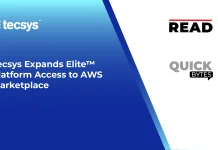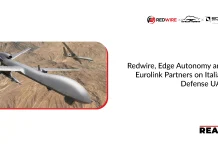SkyFi has teamed up with ICEYE US. SkyFi will include ICEYE’s advanced synthetic-aperture-radar (SAR) satellite system in its Earth-Intelligence platform. This partnership allows users to task ICEYE satellites on-demand. They can also access archived radar imagery via SkyFi’s web portal and mobile app. This offers high-resolution and reliable observations, regardless of weather or lighting conditions.
What’s New
SkyFi users can now draw an area of interest, choose a sensor-mode and immediately request ICEYE radar imaging, spanning spotlight to wide-area modes (50 cm–15 m resolution) and over 10,000 km² scans.
This partnership overcomes constraints of traditional optical imagery (clouds, darkness) by offering all-weather, night-time radar coverage-opening new possibilities in maritime monitoring, infrastructure inspection, border/security surveillance and disaster response.
ICEYE’s fleet is now accessible via SkyFi’s self-service marketplace and API, enabling both enterprise and government users to integrate persistent monitoring into workflows with greater agility.
How This Affects the Aerospace Industry
This collaboration marks a significant milestone for the aerospace industry. It influences satellite operators, service providers, defense-tech companies, and commercial remote-sensing firms.
Expanded UAS/Space-Data Market and Business Models Combining SAR data into one platform changes how we sell Earth-observation (EO) services. Aerospace companies now provide more than just satellite hardware. They also offer on-demand geospatial-intelligence services. This extends revenue models beyond launch and sensor manufacturing. It adds subscriptions, analytics, and SaaS-style services.
Enhanced OEM and Constellation Ecosystem Satellite-OEMs and subsystem suppliers supporting SAR or radar payloads will see increased demand as platforms like ICEYE scale. The ability to offer persistent radar imagery and integrate into application platforms such as SkyFi underscores how supply-chain scale, agility and integration matter more than ever in aerospace manufacturing.
Coverage and Resilience in Tough Environments Aerospace applications, such as constellations and ground stations, require global, ongoing coverage. This must work day or night, even through clouds or storms. The ICEYE-SkyFi combo shows how aerospace companies meet demands. They provide strong data transport, reliable ground segments, and flexible platforms. These solutions are ready for any mission, no matter the conditions.
Also Read: XTI Aerospace Acquires Drone Nerds and Secures $25 Million Investment
Acceleration of Downstream Services and Analytics Aerospace is no longer limited to getting the satellite into orbit-it’s increasingly about delivering insights. With access to large-scale radar datasets, service-providers can build analytics solutions (e.g., shipping-traffic monitoring, port-operations, infrastructure change detection). This partnership enables aerospace organisations to move up the value chain into analytics, AI and mission-operations.
New Competition & Collaboration Dynamics in the Aerospace Value Chain This partnership combines satellite hardware companies, data service firms, and analytics platforms. Aerospace companies need to adapt. Those that only build and launch satellites could face competition. Companies offering complete EO solutions are on the rise. Conversely, partnerships like SkyFi-ICEYE illustrate the collaborative model: integrating hardware, data-platform, and user-interface for broader market reach.
What Businesses Operating in Aerospace Should Consider
Audit your value-chain positioning: If you’re in satellite manufacturing, consider how your systems fit into downstream platforms. If you’re a data-services company, assess how you can embed your offering into on-demand marketplaces like SkyFi.
Focus on service scalability & flexibility: Platforms offering swift tasking and delivery (API-based) will gain adoption faster. Aerospace firms must ensure their assets, ground-stations and data-pipelines can support real-time access.
Prioritise end-to-end integration: Success in this new era depends on how well satellites, ground-stations, software, APIs and user-interfaces work together. Fragmented systems may struggle to compete with platforms offering “one-click” capability.
Expand into analytics-led offerings: The value isn’t just imagery—it’s insights. Aerospace firms should build or partner for analytic layers (change detection, anomaly monitoring, predictive models) on top of radar imagery.
Prepare for regulatory & security dimensions: Radar data, especially in national-security and defence contexts, raises licensing, export-control and data-sovereignty concerns. Aerospace companies must align their data-structure, ground-segment and compliance architecture accordingly.
Conclusion
SkyFi and ICEYE US are teaming up. This partnership shows a big change in the aerospace industry. It’s moving from focusing on hardware to a global system that’s all about data and services. Aerospace companies, from satellite makers to analytics firms, must adapt. Success now means offering 24/7, weather-resistant intelligence. This helps clients make informed decisions, no matter the conditions.
Remote sensing is growing in areas like infrastructure, maritime, defense, and disaster response. Aerospace companies that use data services and flexible platforms will lead the way. This partnership marks a big step forward. It aims to combine satellites, software, and services. Together, we will offer real-time situational awareness worldwide.




